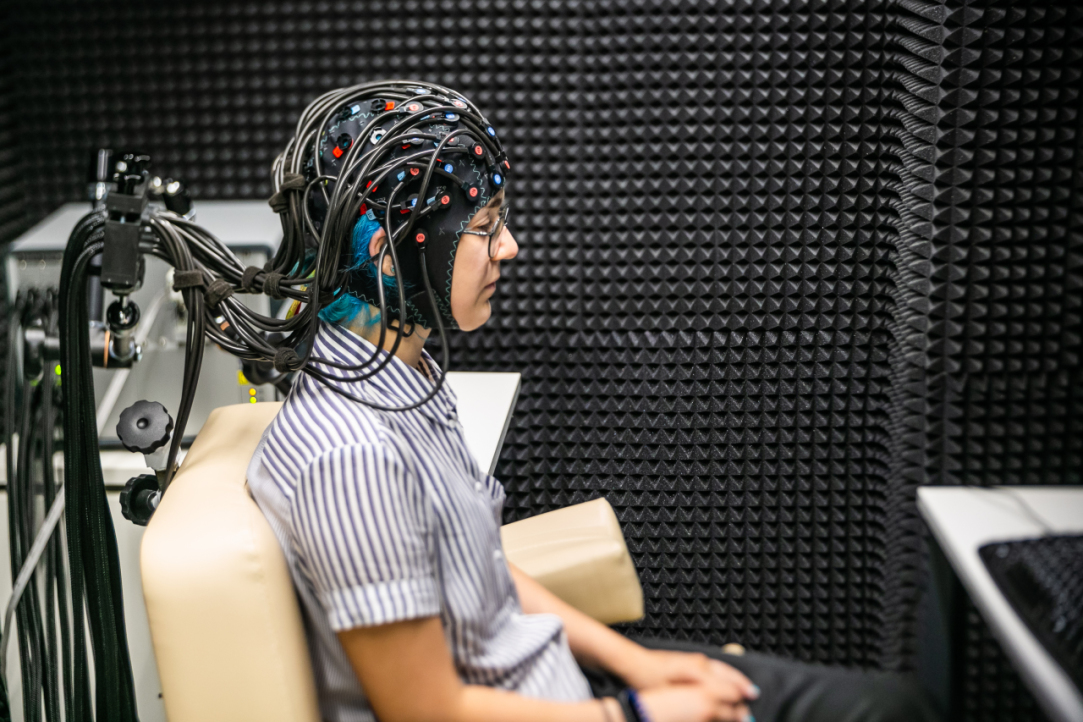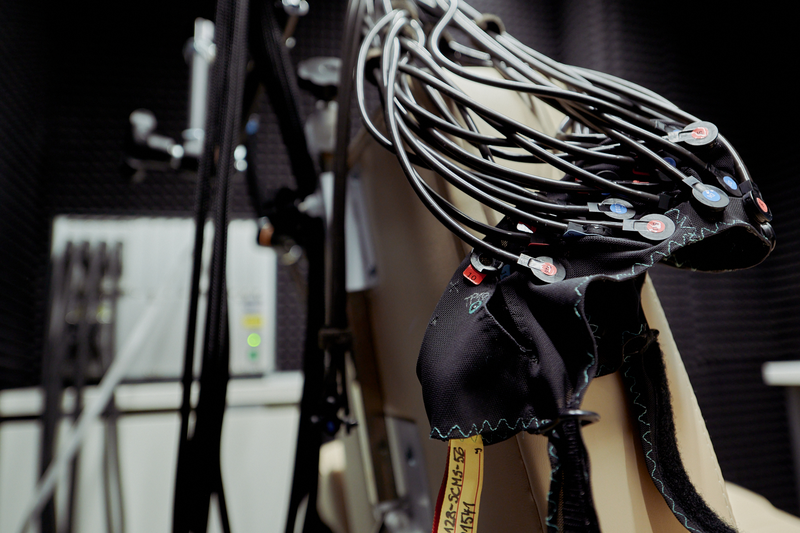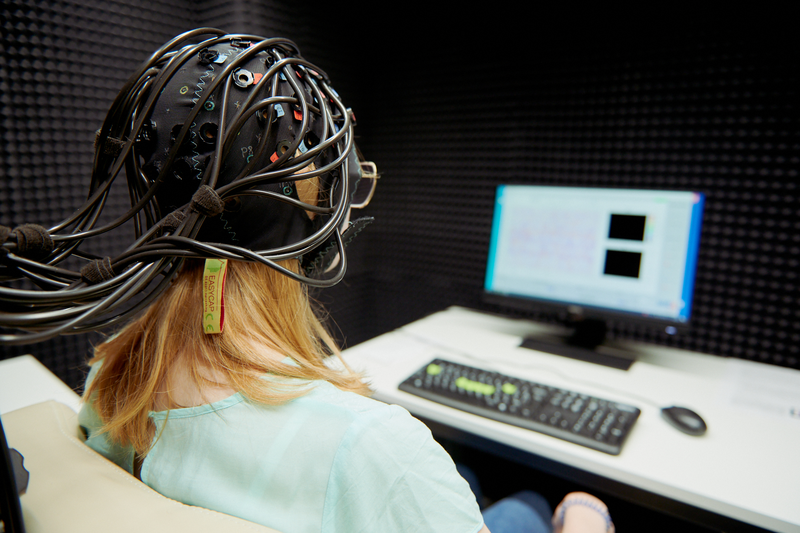New Technologies for Preserving Brain Functions: ‘Not Magic, but Normal Engineering’

New methods of brain mapping will make it easier to identify the cortex areas responsible for speech functions and to perform operations on the brain, as well as reduce the likelihood of damage to important areas. In addition, this will allow for more frequent use of non-invasive methods for restoring speech and other functions lost due to injuries and illnesses.
The first joint scientific seminar was held as part of HSE University’s Strategic Project ‘Human Brain Resilience: Neurocognitive Technologies for Adaptation, Learning, Development and Rehabilitation in a Changing Environment’. Its topic was ‘New Technologies for Brain Function Preservation: Intraoperative Passive Mapping for the Prevention of Speech Disorders’.
Elena Odoevskaya
Elena Odoevskaya, Moderator, Vice Rector of HSE University, said that the first seminar of the new HSE University strategic project opens up a large programme of interdisciplinary research. She noted the importance of cooperation between university scientists and healthcare professionals.
Mikhail Sinkin, Leading Researcher, Department of Emergency Neurosurgery, N. V. Sklifosovsky Research Institute for Emergency Medicine, emphasised that the creation of brain-computer interfaces is fundamental scientific work that is being carried out in many countries around the world. In medicine, such interfaces are important for understanding the functional state of the brain and the specific work of the individual sections of its cortex. Corticography, a method of recording the brain's bioelectrical activity, can be used to study its various manifestations, including detecting the areas responsible for speech.
Alexey Ossadtchi
Alexey Ossadtchi, Director of the Centre for Bioelectric Interfaces at HSE University’s Institute for Cognitive Neuroscience, stressed the importance of removing the veil of mysticism from brain research and methods of its stimulation: ‘This is not magic, but normal engineering.’ He explained that everyone has the cerebral cortex areas responsible for speech, but in different people they can be in different segments. Speech mapping makes it possible to determine their location and avoid damage in the event of surgery, as well as facilitate the restoration of speech in cases of speech disorders. The current mapping procedure involves electrical stimulation of the brain, which leads to convulsions in some patients, and also requires the participation of a neurolinguist to record the performance of speech tasks.
A new method of passive mapping involves performing speech tasks without electrical stimulation, while recording their performance using an electroencephalograph displaying the intensity of the most stable gamma oscillations.

The technology proposed by the Centre for Bioelectric Interfaces involves the alternate activation of the visual and speech areas of the cerebral cortex at short intervals, which makes it possible to detect the activity of its different parts and lobes. Using the accumulated information, it is possible to interpret fragments of individual patients’ recordings. The new method can be applied not only during operations, but also in the interoperative period to understand whether a particular area is associated with speech, including in people with reduced cognitive function. The activity of several electrodes at once during the performance of speech tasks confirms the high probability of a connection between a brain region and speech function. It is also possible to use this method in non-invasive treatment of chronic diseases.
Alexey Ossadtchi also noted that the system created by scientists works with any signal amplifiers. This reduces the need for additional equipment, which can often interfere with operations.
He believes that in the future, the development of the new technique will make it possible to simulate the processes of interruption and restoration of speech, automatically mark fields for operations, and create adaptive grids for the adaptation of the patient’s brain after surgery.
The ability to identify the zone responsible for a patient’s speech function can also be used for non-invasive cognitive experiments, as well as the extraction and analysis of the obtained data.
Olga Dragoy
Olga Dragoy, Director of HSE University’s Centre for Language and Brain, emphasised that the proposed technological solutions also make it possible to solve linguistic problems. In her opinion, in order to study speech production, it is important to determine the brain regions responsible for converting thought signals into speech and articulation (intelligible pronunciation of sounds and words). The study of sensorimotor mechanisms in the cortex will facilitate the work of neurolinguists, identifying the brain parts engaged in different stages of speech activity—from pronunciation of words to their semantics and syntax.
Language, explained Olga Dragoy, is a distributed system; its elements interact with each other in a complex way. ‘You cannot talk about language mapping in general—it is unevenly distributed throughout the brain.’ So, post-stroke aphasia (a disorder of speech and understanding the speech of others) often leads, among other things, to slurred pronunciation of certain sounds and words, as well as forgetting individual words and their meanings.
Experiments during operations have shown that electrical stimulation of certain parts of the brain's frontal lobe disrupts speech initiative, making it difficult to complete a sentence that has been started. When other parts are stimulated, the patient may confuse lexemes.
The performance of specific speech tasks with and without the stimulation of certain brain regions will make it possible to determine which parts of the brain and its cortex are responsible for individual speech elements.

According to Olga Dragoy, the key task for the next three years is to compare the effectiveness of different research protocols: active squared (performing active speech tasks with stimulation), passive-active (without stimulation, but with an active speech task), and passive squared (without stimulation and with passive perception of speech).
She believes that in the future, a speech neuroprosthesis will likely be created to synthesise speech based on a signal from the cerebral cortex. This would make life easier for people recovering from strokes, heart attacks, and other types of brain damage. ‘What we are doing now can help target the areas in which the neural interface can be applied,’ explained Olga Dragoy.
New methods will also expand the application of linguistic models, computational linguistics, and neurolinguistics to the study of speech processes.
Oleg Karpov, Academician of the Russian Academy of Sciences, General Director of the Pirogov National Medical and Surgical Centre, expressed interest in what exactly passive mapping is useful for.
Alexey Ossadtchi explained that it allows surgeons to obtain more accurate information about the areas responsible for speech function and significantly reduce the likelihood of traumatic and disabling operation scenarios for the patient.
Mikhail Sinkin called passive mapping a technology that protects the patient's health as much as possible in a neurosurgical operation. ‘This is a glimpse into the future,’ he asserts.
The seminar was also attended by Andrey Zuev, Head of the Centre for Neurosurgery at the Pirogov National Medical and Surgical Centre; Sergei Shishkin, Leading Researcher of the MEG Centre, Head of the Neurocognitive Interfaces Group, Moscow State University of Psychology and Education; Vasilii Gromov, Deputy Head of the School of Data Analysis and Artificial Intelligence at the HSE University Faculty of Computer Science; Anna Shestakova, Director of HSE University’s Institute for Cognitive Neuroscience; Olga Lyashevskaya, Professor of the School of Linguistics at the HSE University Faculty of Humanities; Igor Sokolov, Administrative Manager of the strategic project ‘Human Brain Resilience: Neurocognitive Technologies for Adaptation, Learning, Development and Rehabilitation in a Changing Environment’.
At the end of the seminar, Elena Odoevskaya thanked the speakers and participants for the interesting reports and meaningful discussion. She emphasised that interdisciplinary research will allow researchers from different specialties to access new resources. At the same time, she believes that they have great pedagogical potential, teaching humanities students to work with data. ‘I think it will be an amazing experience,’ summed up HSE University’s Vice Rector.

